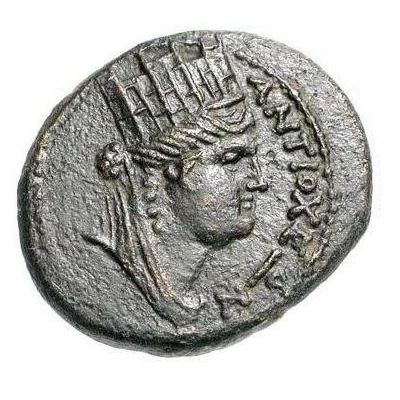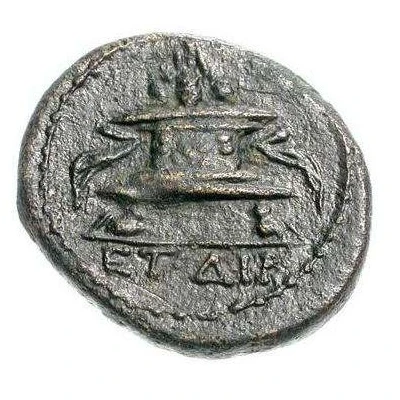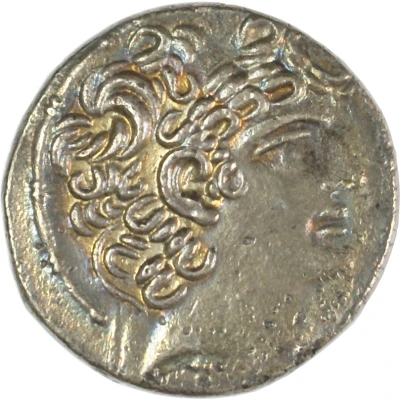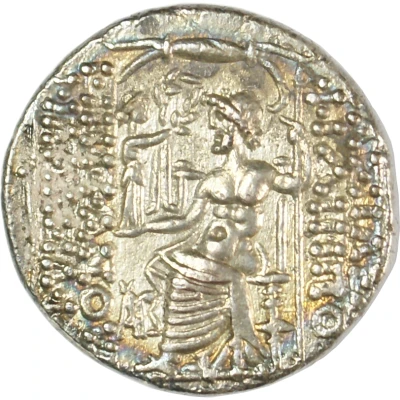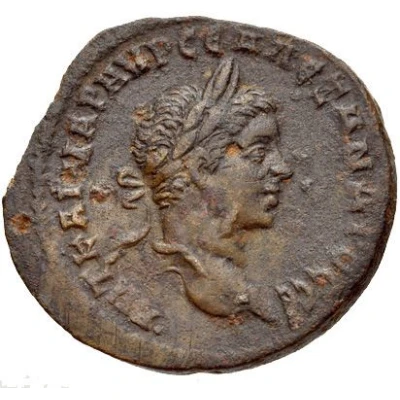
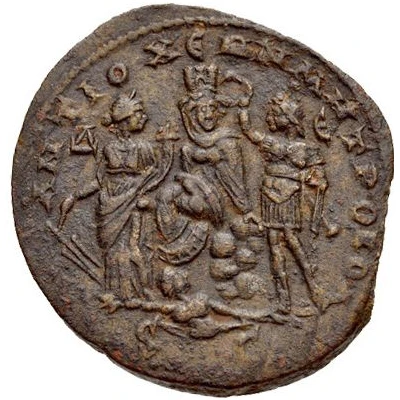

© Classical Numismatic Group, Inc.
Octassarion - Severus Alexander
| (copper alloy) | 16 g | 32 mm |
| Issuer | Antioch on the Orontes (Syria) |
|---|---|
| Emperor | Severus Alexander (Marcus Aurelius Severus Alexander) (222-235) |
| Type | Standard circulation coin |
| Years | 222-235 |
| Value | Octassarion (0.8) |
| Currency | Drachm |
| Composition | (copper alloy) |
| Weight | 16 g |
| Diameter | 32 mm |
| Shape | Round (irregular) |
| Technique | Hammered |
| Orientation | Variable alignment ↺ |
| Demonetized | Yes |
| Updated | 2024-10-06 |
| Numista | N#379518 |
|---|---|
| Rarity index | 97% |
Reverse
Tyche of the City seated on rock, facing left, holding corn ears, looking back. At her feet, river god Orontes swimming left. To the left, front-facing Tyche standing, head turned right, holding rudder and cornucopia. To the right, the Emperor standing, facing left, holding parazonium dagger and crowning the Tyche of the City.
Scripts: Greek, Latin
Lettering:
ANTIOXЄΩN MHTPO KOΛ
Δ-Є
SC
Edge
Plain
Comment
Syria, Seleucidia and Pieria. Antioch and Orontem. Severus Alexander. 222-235 A.D. Octassarion AE (32.4 mm, 10.28 g, 12 h). AVT KAI MAP AV CЄ AΛЄΞANΔP[OC CЄ], laurelled, draped and cuirassed bust of Severus Alexander right, seen from front / ANTIOXЄΩN MHTPO KOΛ, Δ-Є, [SC], Tyche seated left on rocks, head facing ; left, a second Tyche standing facing, head right, holding rudder and cornucopia; right, emperor (?) standing left, holding parazonium (?) and crowning Tyche seated; below, mid-length figure of the river god Orontes swimming left. Rare.Interesting fact
One interesting fact about the Octassarion coin is that it features an image of Severus Alexander, who was a Roman emperor during a time of great turmoil and conflict. Despite this, his reign is remembered for the many reforms and improvements he made to the Roman Empire, including the establishment of a new currency system, the construction of public buildings, and the promotion of the arts and sciences. The coin's design, which includes an image of Alexander and various other symbols and motifs, reflects the cultural and political influences of the time and provides a unique window into the history of the Roman Empire.
